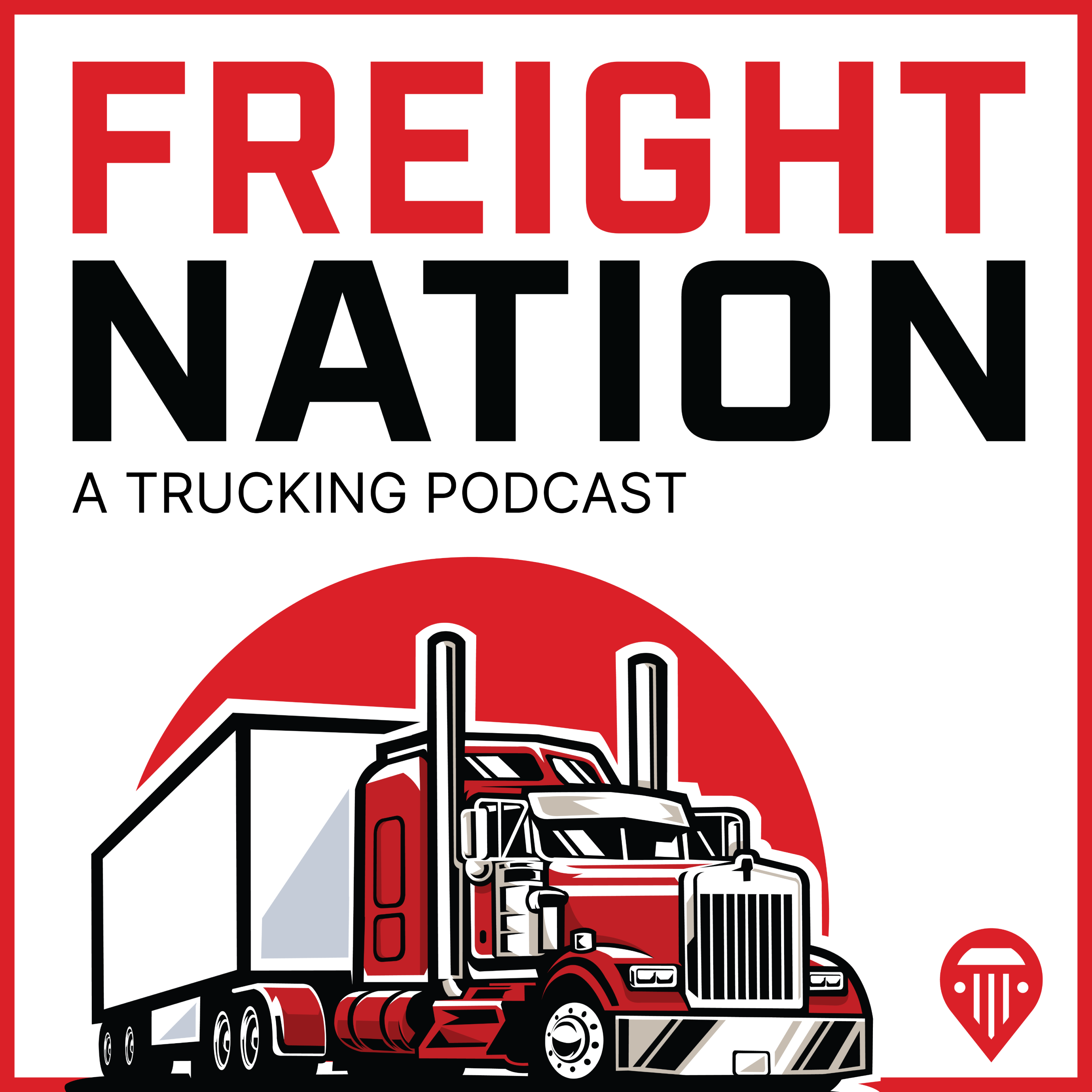
Logistics at a Crossroads
Where freight meets real life.
Hosted by Gia — logistics veteran, cancer survivor, and truth-teller — “Logistics at a Crossroads” explores the industry, identity, and the grit it takes to keep showing up. Freight. Feelings. No filter.
Logistics at a Crossroads
🎙️ Episode 26: The Ripple Effect of Blank Sailings and Global Disruptions
In this episode, Gia delves into the seasonal disruption of blank sailings and its far-reaching effects on global logistics. Every year, the industry faces a summer slowdown, but every 3-4 years, the ripple effects hit harder, causing significant delays, capacity constraints, and higher costs.
Gia discusses how this disruption impacts the U.S. logistics landscape and global trade, emphasizing the role of port congestion and global supply chain delays. From truckers pivoting to different freight types to companies enhancing inventory management strategies, this episode explores the resilience of logistics professionals in adapting to ever-changing challenges.
Join Gia as she breaks down how the logistics industry navigates these disruptions, the adaptation strategies at play, and how the future can be reshaped through innovation and adaptability.
🎧 New episodes every week.
Follow Logistics at a Crossroads on your favorite podcast platform.
📬 Want to connect?
Find me on LinkedIn: linkedin.com/in/reginahunter
Visit the blog: giakat.blogspot.com
Gia (Host):
"Welcome back to Logistics at a Crossroads — I'm your host, Gia, and today we're diving into one of the most persistent yet unpredictable challenges in our industry: blank sailings and their ripple effect across the globe.
Every year, we expect the seasonal slowdown, but every three to four years, that pattern shifts — morphing into something far more chaotic. Port congestion, changing freight dynamics, and global disruptions compound this 'slow season' into a storm of delays, price shifts, and resource misalignment.
But the story doesn’t end with the slow ships. Today, we'll explore how this slowdown impacts not just U.S. logistics but the entire global supply chain — and how we, as industry professionals, adapt."
Let's get into it."
Gia (Host):
"As summer rolls in, we're met with the reality of blank sailing. This is a seasonal slowdown that affects the global logistics chain — but, as we know, every 3 to 4 years, this slowdown feels more like a disruption. Blank sailings lead to fewer vessels on schedule, limited capacity, and higher prices. Even though the ships still arrive, there's simply less space available for standard loads.
What that means is Week 1 we’ll have a full dock of 3 vessels every other day, the next week we’ll see 3 vessels in total.. Which in turn means there’s less space available to run standard loads. What does this mean for truckers? Some pivot to livestock or out-of-gauge freight. Others step back, recalibrate, or take time off the road altogether. It’s a balancing act.
📊 And this isn’t just industry grumbling — it's backed by data. According to a 2023 Drewry Maritime Research survey, 47% of shippers said blank sailings disrupted their capacity planning more than any other issue in Q2. That’s a strong signal that this ‘normal’ season needs better forecasting tools and coordinated planning."
Gia (Host):
"While blank sailings and slowdowns are bad enough in the U.S., the impact doesn’t stop at our borders. In fact, global port congestion in places like Asia is Amplifying the situation.
When key ports in China, Vietnam, Singapore and other hubs experience delays, it creates a domino effect. Congestion means longer wait times, fewer available ships, and unreliable schedules. It shifts freight availability, pricing, and delivery expectations — all at once. In April 2024, Sea-Intelligence reported that global vessel schedule reliability dropped to just 58.3% — a 6-point decline from the previous quarter. That kind of unreliability doesn’t just delay cargo — it disrupts entire supply chains.
And let’s not forget tariffs, which are often treated as isolated policy matters. But in this context, they’re just another layer in an already unstable stack. The cost, unpredictability, and global scale of the slowdown mean that adaptability isn’t optional — it’s the new
Gia (Host):
"Even as blank sailings and global congestion shake the logistics world, we’ve witnessed something incredibly powerful: resilience. The logistics industry is no stranger to disruption, but the key to surviving and even thriving lies in how we adapt.
So, how exactly do logistics professionals adjust when the normal flow gets interrupted? It comes down to a few key strategies:
- Shifting Freight Types:
As containerized shipping slows, many truckers pivot to livestock, out-of-gauge (OOG) freight, or other specialized loads. This shift allows them to keep moving goods, but it requires flexibility in scheduling and route planning. It’s not easy — it means new permits, different scheduling, and even route recalibrations. What’s crucial here is identifying freight that can still be transported while keeping costs manageable.
But it works. It keeps the wheels turning — literally and figuratively."
- Exploring New Routes and Modal Shifts:
With limited capacity and fewer vessels, alternative routes become increasingly important. Diversifying shipping lanes and considering multimodal transportation options—like rail or airfreight—can help offset the slowdown in ocean freight. Some major players, like Maersk, are investing in AI-enhanced forecasting tools to flag at-risk trade lanes ahead of time. That kind of foresight helps reassign cargo before bottlenecks form."
3. Optimizing Inventory Management:
"Inventory management becomes crucial in times of unpredictability. More companies are shifting from just-in-time to hybrid models.
🧮 A 2023 Gartner survey revealed that 64% of supply chain leaders have adopted a hybrid strategy — combining efficiency with resilience. It’s a safety net without completely sacrificing lean operations."
- Enhancing Communication: IS KEY.. WE have to communicate not just with customers but our teams.
Disruptions are stressful, but open communication can make all the difference. Logistics companies are staying in constant contact with clients, keeping them informed about delays, price fluctuations, and the shifting landscape. For example, real-time tracking and automated alerts have become crucial in letting customers know exactly where their shipments are and when they can expect them. This transparency not only builds trust but also gives customers the ability to make informed decisions.
5. Relying on Technology:
Technology isn’t just helping manage existing resources, it’s driving the innovation that keeps the wheels turning in tough times. From AI-driven route optimization to blockchain for transparent logistics and digital twins for inventory visibility, tech is offering new ways to solve age-old challenges. These innovations aren’t just exciting. They’re giving companies a real edge in navigating a disrupted market."
You know, there’s a human cost to this slowdown too. Drivers face reduced loads. Dispatchers deal with unpredictable schedules. Admins take the brunt of client frustrations. (we see you; we love you and are oh so thankful you can take the call when we are dealing with 5 irons in the fire)
The logistics chain isn’t just containers and cranes — it’s people. So, if you’re feeling stretched, invisible, or frustrated during this season — you're not alone. The quiet hustle you’re doing matters more than you know. And when the chaos clears, you’re the reason goods kept moving."
Gia (Host):
"As we move past the summer months, we’ll see a return to regular schedules, but the long-term implications of these disruptions continue to linger. Recovery doesn’t happen overnight, and the pressure on logistics operations will likely continue for a while. 📍 Port of Los Angeles Executive Director Gene Seroka said just last month that a full recovery from global congestion may not come until early 2026. That’s a long horizon — but also a long runway to prepare.
But this is an opportunity. We can build strategies that strengthen the supply chain against future disruptions. Investing in technology, diversifying routes, and collaborating more effectively across borders are just a few of the ways logistics can build resilience.
So how do we build resilience?
- We double down on technology.
- We strengthen partnerships across borders.
- We rethink our definitions of ‘normal.’
The future may be unpredictable — but so are we. Adaptive, resourceful, relentless."
Gia (Host):
"Thank you for tuning in to Logistics at a Crossroads. I’m your host, Gia, and we’ll see you next time as we continue exploring the crossroads of logistics, policy, and real-world solutions. Until then, keep moving forward." And remember, I’ll be navigating the crossroads right along with you.
Podcasts we love
Check out these other fine podcasts recommended by us, not an algorithm.

Supply Chain Revolution
Sheri Hinish, SupplyChainQueen
Supply Chain - Unfiltered
Institute for Supply Management®
The Bootstrapper's Guide to Logistics
Nate Shutes
Everything is Logistics
Blythe Brumleve
WHAT THE TRUCK?!?
FreightWaves
Freight Nation: A Trucking Podcast
Truckstop
Logistics Unboxed: Digital Freight
The Advisor W/ Stacey Chillemi
The Happiness Lab with Dr. Laurie Santos
Pushkin Industries
The Wandering One Podcast
The Wandering One Podcast
We Can Do Hard Things
Treat Media and Glennon Doyle